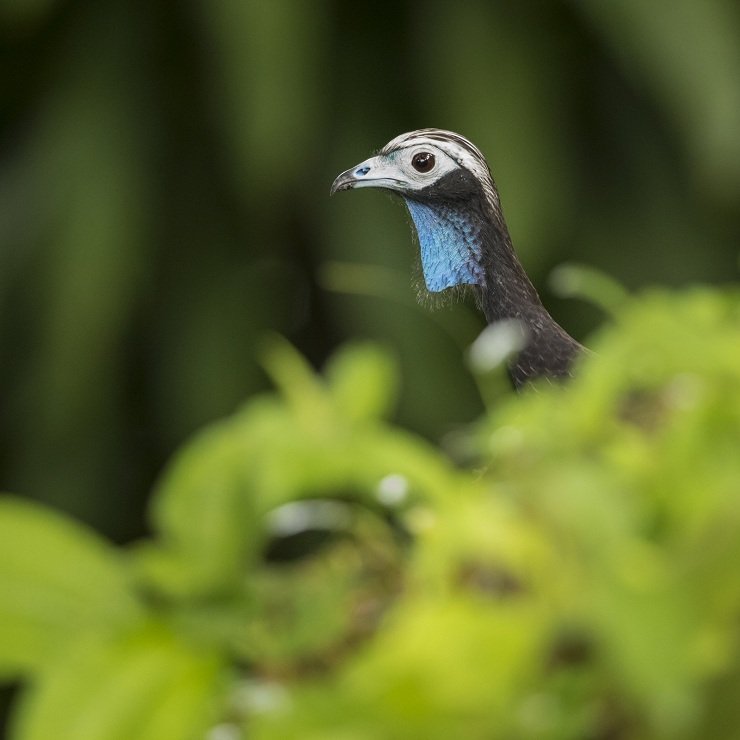
Luck is a funny thing. It always presents itself in unexpected ways, seemingly to deliberately confuse and mislead. Last year we reunited with a couple good friends who flew in to T&T for a few days and headed to the remote village of Grande Riviere.
This sleepy fishing village on the north coast of Trinidad should ring a bell – it boasts the densest nesting population of Leatherback Turtles in the entire western hemisphere. The village has been featured in various documentaries and magazines over the years. Everyone from the BBC to National Geographic has been on its shifting sands documenting these ocean giants. Don’t believe me? See for yourself here. The presenter may ring a bell.
What birders value most in this village does not frequent the shore, however. The mature forest deep in the hills is the single best place in the world to catch a glimpse of the critically endangered Trinidad Piping Guan. This large, arboreal turkey-looking bird is endemic to Trinidad and recent estimates put their total numbers at around 300 individuals.
After stopping for afternoon coffee, our two-hour journey to Grande Riviere was made in pouring rain. As grim as the prospects seemed, we knew that we had planned to stay there for two nights and should have ample opportunities to see both turtles and guans. Due to the weather, we were unable to stop at any of the scenic look-outs I had in mind.
As we were nearing our destination the rain began to ease, and the clouds began to lift. I knew that with just about an hour and a half of daylight left, just as children would emerge to take advantage – so would the birds. Although we were all a bit worn from the long winding road, we opted to head into the hills instead of comfortable hotel rooms. This proved to be one of the best decisions I’ve ever made in my life.
First we saw one Trinidad Piping Guan, as predicted – in the open, preening after the rains.
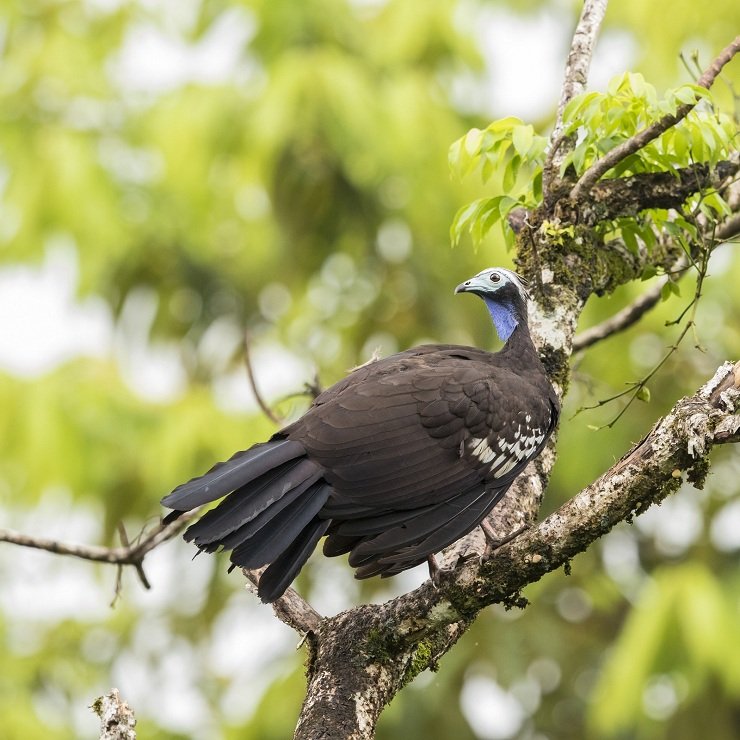
Then another, high up – casually strolling on an open branch.
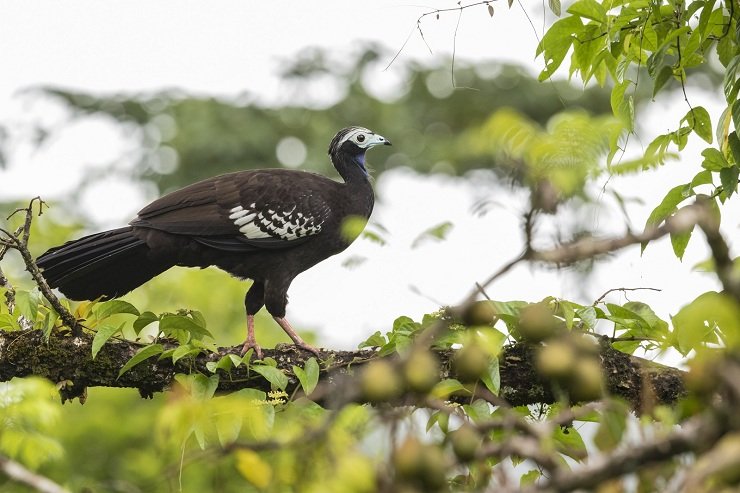
And when I looked back where the first bird was, there were now two!
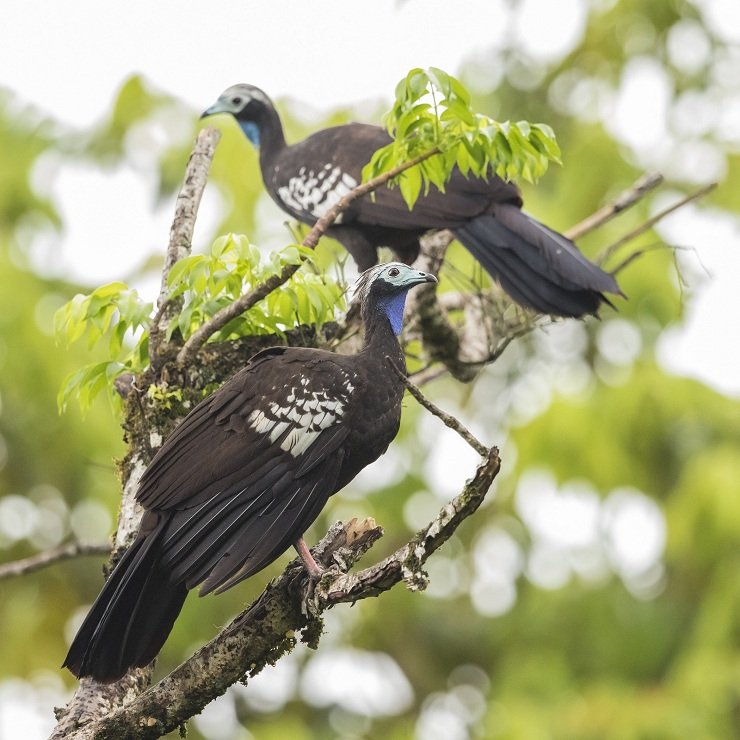
To put this into perspective, the first photo was at 4:40pm. The second at 4:42pm, and the third a minute later. Before we knew it, more guans began arriving.
It was as if wherever we looked, there was a blue face staring back at us.
Guans flew immediately over our heads, some of them flying so closely that we could feel the wind rush past. As visible as they all were, photographing them was no walk in the park as there was still considerable thick cloud cover blocking the sun that was by this time about to dip below the treeline anyway.
Fortunately, many birds remained in the open.
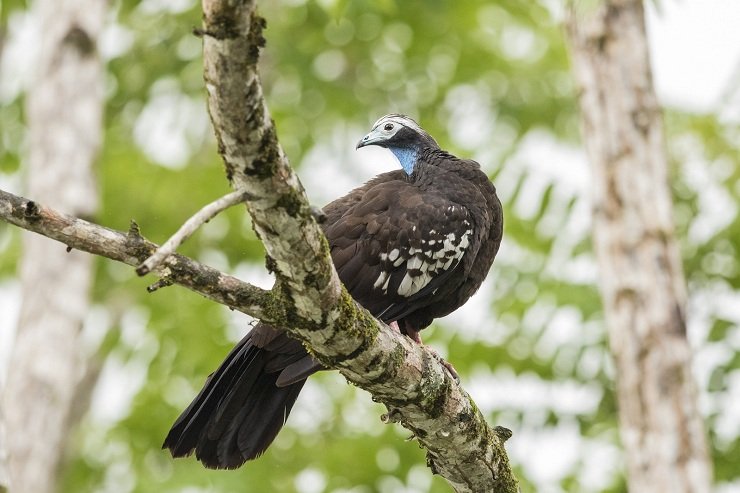
There were so many opportunities being presented simultaneously we didn’t know what to do with ourselves. It was 4 of us, and about 30 of them. I began ignoring the birds that were showing well and tried to be creative with those that weren’t.
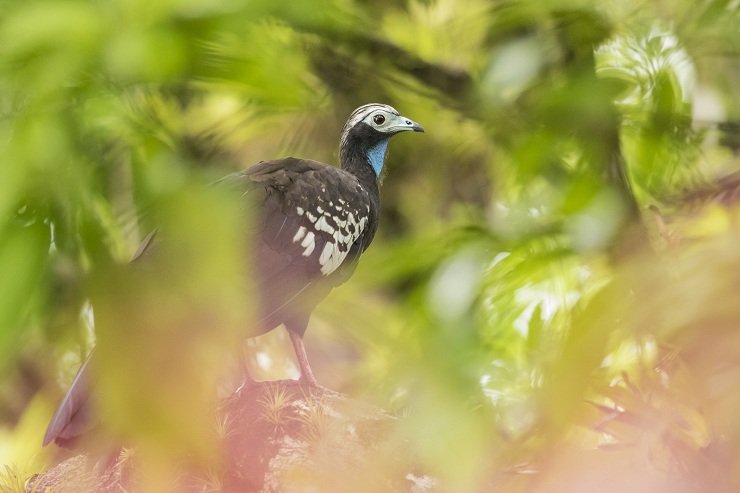
I had never dreamt that it was possible to be close enough to a wild Pawi – as they’re called locally – my closest experience was with a rehabbed bird that had only one eye (who passed away recently, RIP Pawi) – but they clearly had other ideas. I noticed movement on a small hillock and sure enough it was another guan feeding on the other side. No more than fifteen feet away.

Even though some of them were in near complete darkness, to pass up an opportunity with a critically endangered endemic would be akin to knowingly leaving a bar of gourmet chocolate in your car on a hot day.
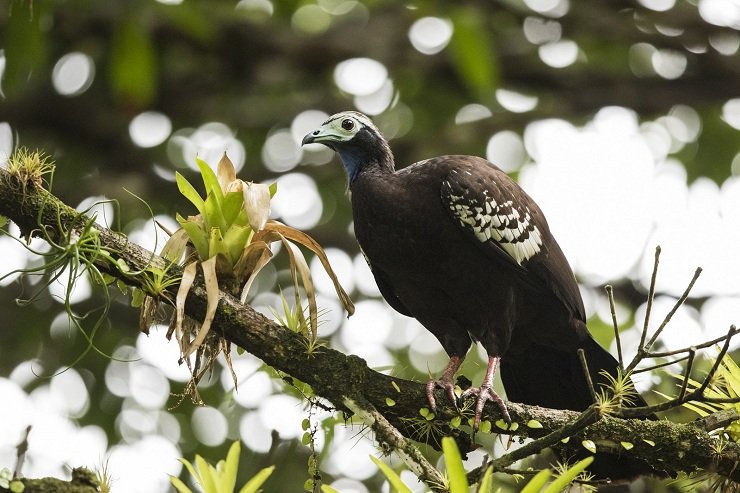
By this time, I had taken more photographs of this bird than I had in all my years birding in Trinidad prior. But it was near impossible to stop. They were just so ridiculously close!
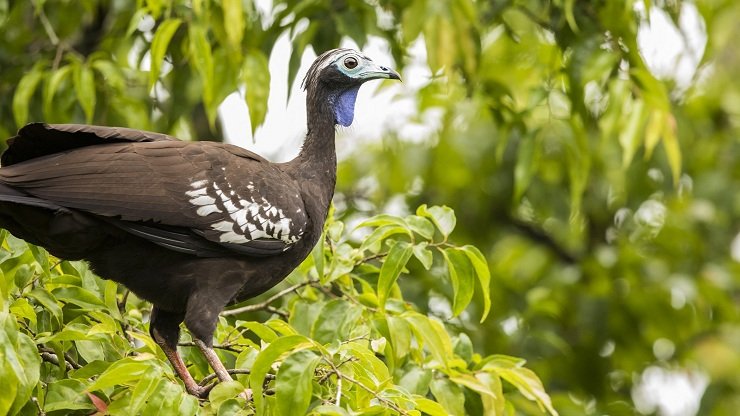
Then, something even more magical happened. Some of them started heading for the ground, their habits of walking on branches now applied to roots.
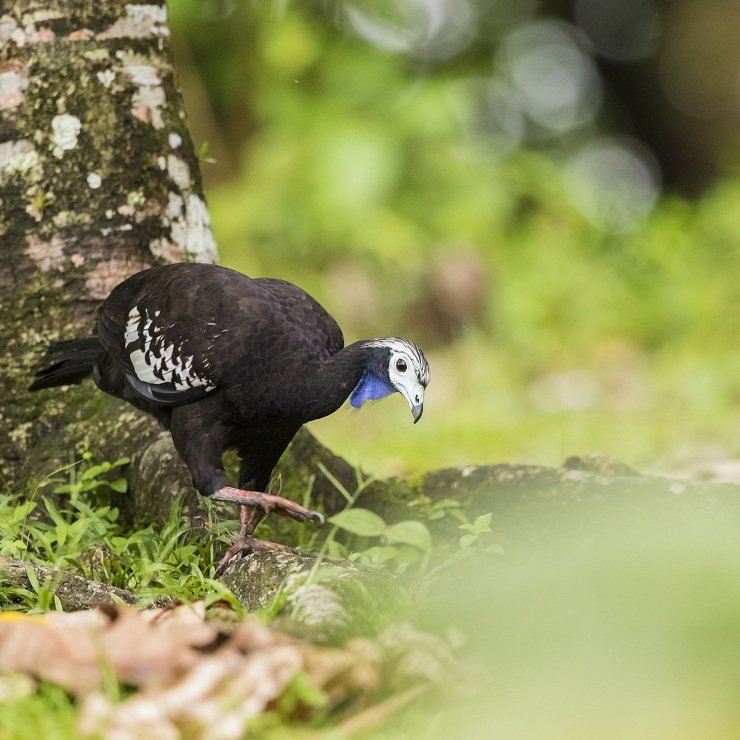
We watched them in flight, among the branches and now squabbling with each other on the ground as they searched for fallen fruit knocked off by the heavy rain.
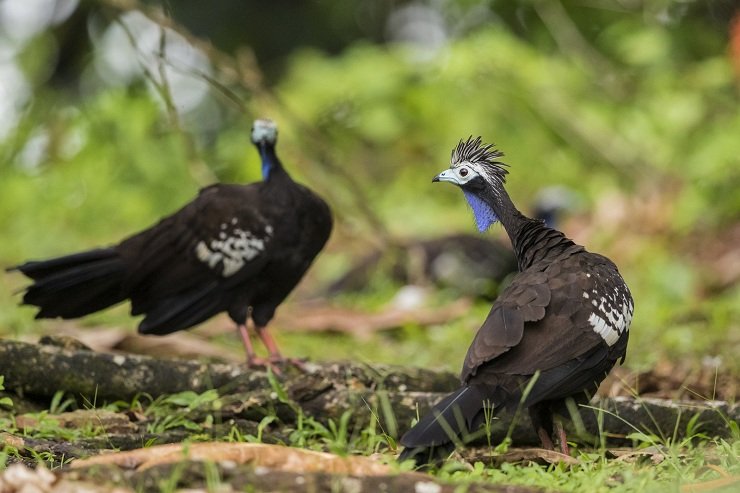
There is a certain sense of adrenaline that courses through one’s veins when presented with a once-in-a-lifetime opportunity. This tends to leave one feeling euphoric – for this instance however our happiness was tinged by the sobering fact that we were experiencing approximately ten percent of a species’ entire population.
It was tough to tear ourselves away from the scene, but eventually darkness began to creep in everywhere. And we were hungry. This last image was made at 5:45pm – just over an hour after we noticed the first bird.
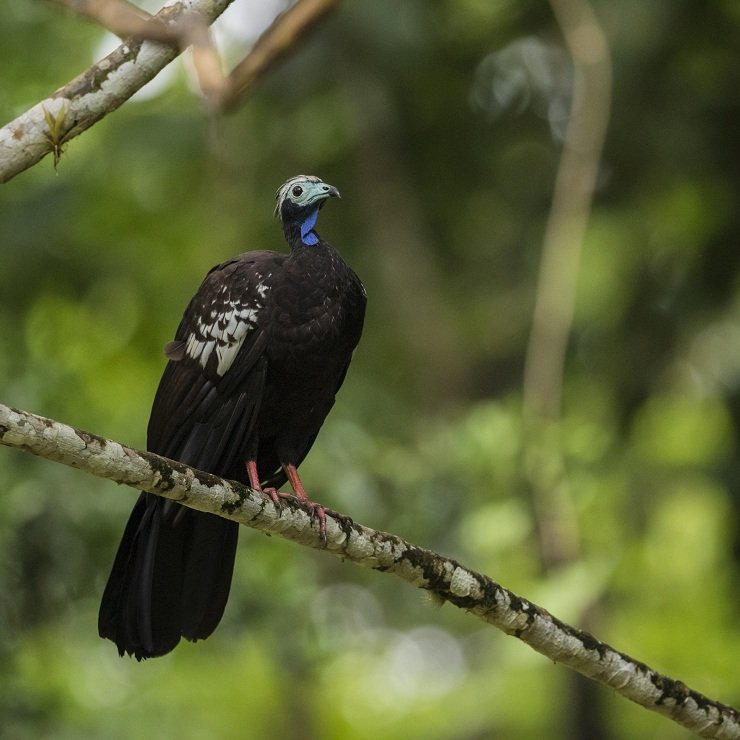
Sure enough there were other birds around – but to have your target bird frolic in full view for an hour – it’s an occurrence that doesn’t come regularly. Sorry, Black-tailed Tityra and Guianan Trogons!
Notwithstanding our incredible first evening hour with the guans, we returned to the forest the very next morning to find not a single Trinidad Piping Guan. Same thing happened the following morning. Such is the lottery of birding.













Last September, I stood on that same hill early in the morning, sheltering under a big tree from a torrential downpour, not realizing that I was just 20 meters away grom a solitary guan. When I emerged after the rain stopped, the bird was gone. An epic dip. :-/
Oh no!
Wonderfully descriptive article Faraaz. I took the time to read and follow the narrative as it evolved through the pictures. The birds look like a mix between raptors and turkeys (of which we have many in Canada). I look forward to reading more articles. Thank you.
This experience sounds exhilarating. I’ve still never seen one of these birds!
Wow, that is amazing, Faraaz! I count myself lucky to have seen one Pawi and can imagine the adrenaline rush at encountering so many at once so closely.
This literally sums up a recent trip for me. I have gotten into bird and wildlife photography about 2 years now. Got the amazing opportunity to go to Grand Riviere to photograph them, reached up in the same Rainy Weather. The evening we reached it started with 1 then 2 then up to 10 all over the property. Same bad light, Woke up the next morning hoping for better lighting but it wasn’t and the Pawi’s where much less present. Absolutely blessed to have gotten the chance to see and photograph them!